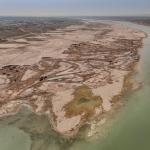Info 296A
Social Information Spaces
2-4 units
Course Description
This is a studio course where we will examine how networked information spaces can be understood (or redesigned to become) inhabited, socially-navigable spaces. The focus of the course will be on the social navigation of information spaces, a new set of methods and techniques now emerging from the areas of Computer-Supported Cooperative Work (CSCW) and Human-Computer Interaction (HCI). Today, collaborative filtering and recommender systems are the most widely known of existing techniques for social navigation (e.g., amazon.com's book recommendation feature). We will begin by analyzing existing social information spaces, like newsgroups, chats and MUDs. We will then experiment with a series of design strategies for remaking "uninhabited" information spaces into socially navigable spaces. Using ideas from art, architecture, film theory, anthropology, sociology and geography students will complete a series of design exercises to analyze existing physical and information spaces as well as to redesign "uninhabited" sources of information (e.g., websites, code archives, library catalogs, etc.) as "inhabitable," social information spaces. As a final project, students will be asked to create a virtual "map," "compass," or other navigation tool for an information space and/or a combined physical/virtual space (e.g., as linked through wireless devices). Readings will include Alan Munro, Kristina Hook and David Benyon (eds.) Social Navigation of Information Space (New York: Springer, 1999); and, Martin Dodge and Rob Kitchen, Mapping Cyberspace (New York: Routledge, 2001).
Prerequisites
Signing Up for I School Classes
Instructions for Berkeley undergrads, graduate students, and community members









